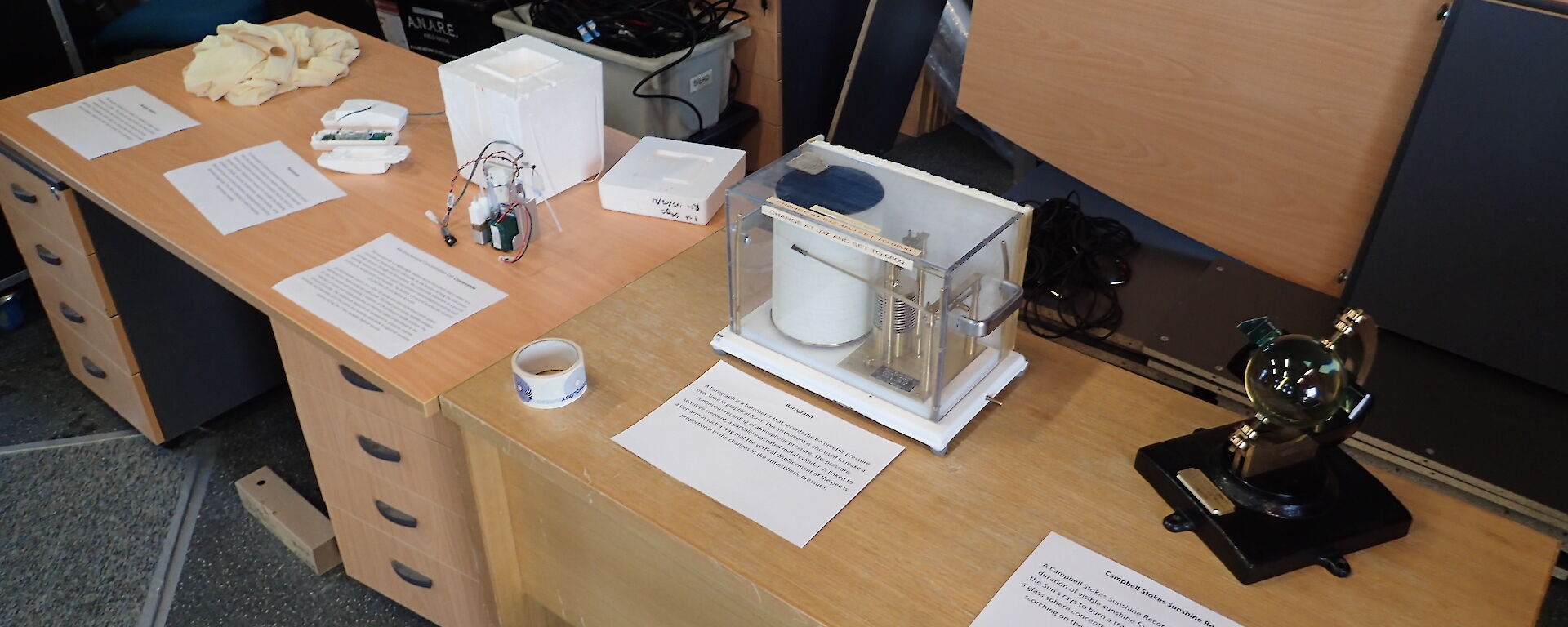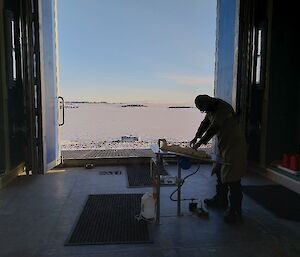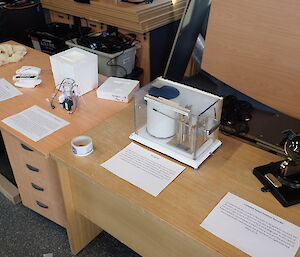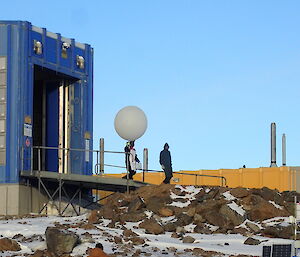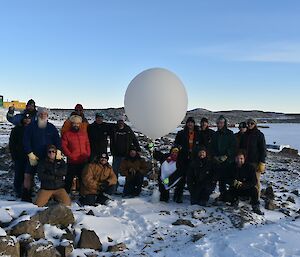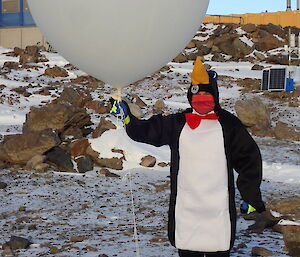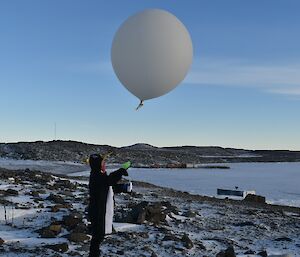Last Tuesday 23rd March, the Davis Meteorological Team hosted an evening in the Pineapple (old field store building) to celebrate all things WEATHER on World Meteorology Day!
In Antarctica the weather dominates the environment and everything we do. For over a century, from Mawson recording wind gusts of 146 knots (270 kilometres per hour) at Cape Denison in 1912 (the Guinness World Record holder for fastest katabatic wind), to the mere 15 knots (28km/h) at Davis this weekend, weather observations in Antarctica have been recorded.
In the week prior, a competition was held to predict the maximum wind gust for the coming week, the winner awarded a highly coveted weather balloon release. Josh, the plumber from Lord Howe Island, established himself as the station’s best forecaster, predicting exactly 23 knots in a remarkably calm week.
The venue was decorated with show-and-tell of various meteorological equipment including a weather balloon, radiosondes, a barograph, and a Campbell Stokes sunshine recorder. There was even a forecasting dartboard on the wall for anyone wishing to determine what tomorrow’s weather might be!
The Australian Bureau of Meteorology uses hydrogen to fill our weather balloons. It is much cheaper than the alternative helium and we make as much of it as we need on station. The process involves using electricity to split water into oxygen and hydrogen in a kind of reverse fuel cell. Of course, the disadvantage of hydrogen is that it’s flammable, explosively so. Lots of training, care and safety equipment go into making the whole procedure safe. We do however have a small amount of helium on station. It is used if there is an equipment breakdown, but can also be used for VIPs to ensure safe guest weather balloon releases.
It was a beautiful afternoon for a release, with sunshine and calm conditions, showing that Davis station is truly the Riviera of the South! The assembled crowd enjoyed the special afternoon with views of icebergs, sea ice and local elephant seals. There was plenty of opportunities for photos with the balloon, before our celebrity plumber penguin Josh released the balloon with grace and precision at the appointed time. The balloon gently rose up before disappearing into the clouds. Everyone headed back to the mess for a delicious dinner cooked by our amazing chef Jordan.
The weather balloon's radiosonde recorded the temperature, humidity and winds as it flew up through the troposphere and stratosphere reaching the respectable altitude of 29,135 metres after a flight time of 1 hour 39 minutes. At that height the temperature was −55°C, humidity was 0% and the wind speed was 25 knots (46km/h from the west).The balloon had travelled 88km east from launch to bursting.
Josh’s flight, along with the 730 other flights we do each year, helps us determine the atmospheric conditions above us and what the clouds are doing. The data goes into the computer models which produce the Australian weather forecasts everyone gets each day. It is also added to the long term climate record and helps the scientific community study the earth’s atmosphere.
Davis Met Team — Mick, Rob and Honorary Met Penguin Josh

